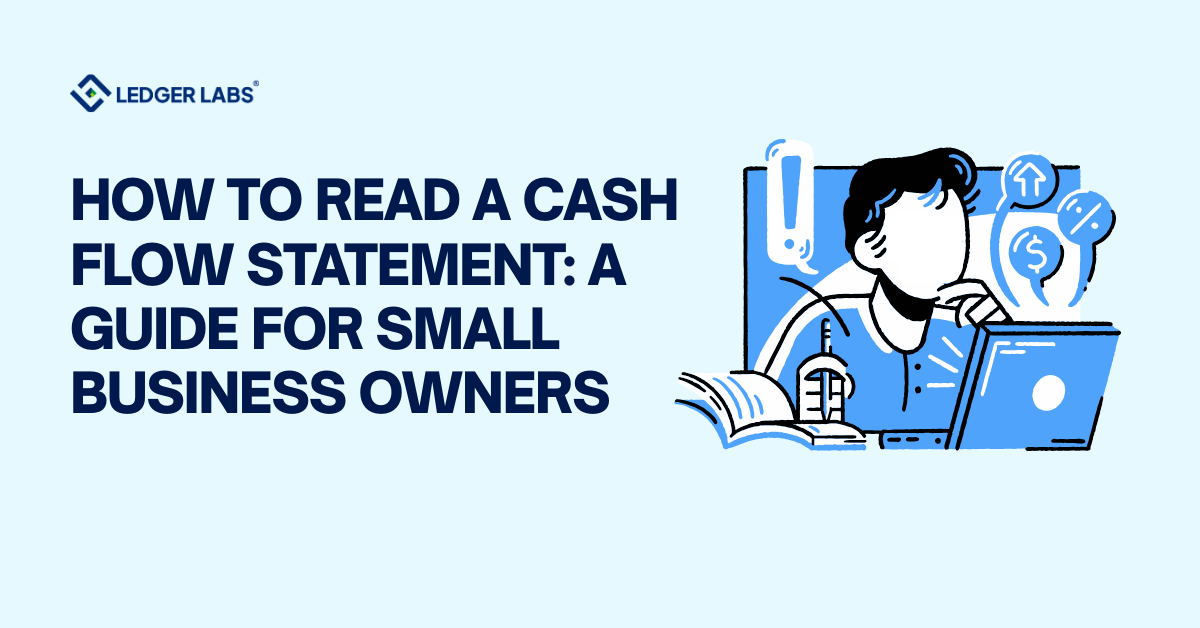1. NetSuite is trusted by over 24,000 businesses for e-commerce financial management, offering scalability, customization, and integrated solutions.
2. Accurate financial statements enable better cash flow management, legal compliance, and data-driven decision-making.
3. NetSuite simplifies managing income statements, balance sheets, cash flow, and equity reports, ensuring financial precision for small e-commerce businesses.
4. Key benefits include identifying profitable sales trends, improving cash flow, and ensuring regulatory compliance.
5. Proper integration with systems like CRM and inventory boosts efficiency, enhancing e-commerce success.
As you’ve entered the world of e-commerce, especially from a traditional business model, you should be quick to be able to manage your financial statements.
Like how you can’t imagine an airplane without a cockpit, running your small e-commerce business is difficult without mastering its financial statements. And it can get risky if you don’t maintain precision in these documents.
Financial statements that are accurately maintained present a clear picture of your business’s cash flow, finance position, and debt obligation. When you are committed to this transparency, it instills confidence in potential investors. It means you can easily attract the necessary funds to fuel growth.
But how can you manage these statements properly?
Amidst this chaos, NetSuite ERP is a tool you can rely on. This software provides a unified platform to manage budgeting, accounting, and forecasting. NetSuite for ecommerce is the most adaptable by far. And in this blog, we will know how your small business can get the most out of it.
Understanding Financial Statements in E-commerce
A financial statement is a set of records that contain all the information related to a company’s financial performance. Whether it’s a large business or an e-commerce store, it keeps track of their money matters. Simply put, it is a small part of the entire world of e-commerce accounting.
Income statements, balance sheets, equity statements, and cash flow statements are its 4 components. They all paint the picture of your business’s status. Let’s understand them in brief:
- Income Statements: Also known as profit and loss statements, this document displays revenue, profits, and costs over a specific period.
- Balance Sheet: It presents information about your business assets, liabilities, and equity.
- Cash Flow Statements: With the help of this document, you can track the cash inflow and outflow. You can easily understand how cash is being generated and used.
- Equity Statements: Lastly, a one-page report shows the overall value of owner’s equity.
The e-commerce industry is built on the fast lane. One organization often has to deal with numerous transactions daily. And recording them accurately does get overwhelming, doesn’t it?
No matter how difficult it is, precise data recording will be the cornerstone of your business’s success. Inaccuracy can lead to bad decisions, affecting growth. Conversely, correct financial reporting has several benefits to offer, including:
- Better cash flow management
- Informed decision making
- Compliance with the law
- Identify sales trends and profitable products
Using NetSuite accounting software for e-commerce effectively can lead to your business’s financial success. With proper usage, you enjoy all the benefits mentioned above. So, let’s take a look at how to make the best use of this tool.
Setting Up NetSuite for Your E-commerce Business
Are you looking to set up your e-commerce site with an ERP system? Well, there are several ERP software available for setting up your E-commerce business, so it might get overwhelming to choose one.
Out of all, NetSuite is one of the top ERP solutions. It’s so famous that more than 24,000 companies trust this software for their business.
As we know NetSuite is a cloud-based software with a number of important functionalities and features. Customer relationship management, financial management, and inventory management are some of its best modules. There’s no doubt this software is a top choice for many e-commerce businesses due to its several capabilities, such as:
- Possibility of customization
- Ability to scale up the business
- Efficiency
- Integrated solutions
Here are the steps to get you started in creating a successful e-commerce business with NetSuite:
Step 1: Choose a NetSuite E-commerce Platform
When starting an e-commerce site using NetSuite, selecting a platform is the first important task. This choice will determine the success of your online store. This is how you can do so:
- Research: Look into various available NetSuite e-commerce platforms.
- Compatibility: Ensure that the chosen platform fits your business needs.
- Features: Don’t forget to look for the necessary features you want for your site.
- Customization: If a platform allows personalization to match your brand’s vision, it’s the best.
- Integration: Verify if it can integrate with your existing systems.
Step 2: Customize Your E-commerce Site
Once you’ve selected the platform, it’s time to customize it to your design and brand’s unique voice. For that, do the following:
- Set up product categories, attributes, and pricing.
- Use features like personalized recommendations and promotions to create unique customer experiences.
- Integrate third-party apps and plugins to boost your e-commerce website’s functionality.
Step 3: Integrate NetSuite with Your Existing Systems
Another crucial step in setting up your e-commerce business in NetSuite is to integrate the software with your current systems. You can follow the below steps:
- Identify the systems you use for inventory, CRM, and order processing.
- Use connectors or APIs to link NetSuite with these systems.
- Migrate data from your existing systems to NetSuite accurately.
- Adjust settings to match your business processes.
- Test the link between the software to fix any issues.
Step 4: Set Up Payment and Shipping Options
To make your e-commerce site user-friendly, payment and shipping options should be set properly. Mentioned below are the steps to follow for the same:
- Select a reliable gateway that integrates with NetSuite, like PayPal or Stripe.
- Configure your payment gateway account settings.
- Enter the necessary information on the Payment Processing page.
- Define shipping methods, rates, and zones.
- Set rules like handling fees or free shipping thresholds.
Step 5: Launch Your E-commerce Site After Thorough Testing
Before finally launching your e-commerce site, you must test it to find any roadblocks and solve them. What you need to do is:
- Test the site’s features, including the shopping cart, payment gateways, and user registration.
- Ensure the site works on different browsers, devices, and operating systems.
- Check the site’s speed and improve it to enhance user experience.
- Implement security measures like SSL certificates to secure transactions and customer data.
- After thorough testing, make the site live for customers.
Generating An Income Statement in NetSuite
If you want to see your company’s revenues, expenses, and profitability over a set duration, an income statement report has to be created. In NetSuite, you can generate this report using the following steps:
1. Access your NetSuite account using your credentials.
2. On the NetSuite dashboard, go to the “Reports” tab.
3. Select “Financial” from the dropdown menu.
4. Then, click on “Profit and Loss” from the Financial section.
5. Now, you can customize the report based on several factors like:
- a) Date Range: Set the desired date range for your income statement.
- b) Subsidiaries: If applicable, select the specific subsidiary or all subsidiaries.
- c) Department/Class/Location: Choose any specific department, class, or location if you want to filter the report further.
- d) Filters: Apply any additional filters relevant to your business needs.
6. Click on “Run Report” to generate the income statement based on your selected parameters.
7. You can save or export the report as required.
Creating a Balance Sheet in NetSuite
Among many useful financial statements, a balance sheet is crucial for e-commerce business owners. It allows you to see your business’s assets and liabilities. Creating a balance sheet in NetSuite is quite simple and it involves the following steps:
- Go to the NetSuite dashboard.
- Click the “Reports” tab and select “Financial” from the drop-down menu.
- Next, select “Balance Sheet”.
- Customize the report as needed.
- Once done, click “Run Report” to review the balance sheet.
Generating a Cash Flow Statement in NetSuite
Know the exact figures of cash flowing in and out from various operations of your business with a cash flow statement. The steps for creating this document in NetSuite are pretty straightforward:
- Click on “Reports” on the NetSuite dashboard.
- From the drop-down menu, select “Financial” and then “Cash Flow Statement”.
- Wait for the “Report” to be generated.
- If needed, you can also customize the document based on factors like date, department, etc.
Interpreting Financial Statements for Decision-Making
The main motive for generating the above-mentioned financial statements is to evaluate business performance and value. This is only possible when you analyze the balance sheet, income statement, and other reports thoroughly. It will help you understand your business’s financial health and make informed decisions.
There are many ways to analyze your reports efficiently using NetSuite. Some of the main ones we’ve mentioned below:
Comparative Analysis
With this analysis, you can identify trends and the effects of marketing campaigns.
- Go to Reports in NetSuite. Then, click “Saved Reports” and select the monthly sales report.
- Specify the periods to compare (e.g., January vs. February) using the filters like Period or Date Range.
- Compare sales figures for the selected periods, noting trends like increased sales in February.
- Use integrated charts and graphs, such as bar charts, to visualize sales trends.
Variance Analysis
Let’s take an example of comparing your budget with actual expenses for a period. Variance analysis, in this case, will help identify deviations from your company’s budget. By analyzing these aspects, you can take corrective actions for the future and manage costs better.
- Go to Reports in NetSuite. Then, click “Saved Reports” and select the budget vs. actual expenses report.
- Choose the relevant date range (e.g., Q1 of the current year).
- Compare actual expenses against budgeted figures, highlighting significant variances.
- Use conditional formatting to highlight variances, such as higher marketing expenses due to a new campaign.
Best Practices for Financial Reporting in NetSuite
A business should follow some leading practices to ensure its accuracy in financial reporting. Plus, it makes sure the report complies with the industry’s best standards. Take a look at the basic best practices you must follow:
- Regular Updates: Keep your financial data updated. It’s best to make it a habit.
- Customize Reports: Have you mastered the basics of creating financial statements? That’s great. Now, it’s time to get advanced. You can add custom formulas, do conditional formatting, or integrate charts to meet specific business needs.
- Automate Processes: Another important practice to follow is to schedule and automate reports in NetSuite. Use the software’s automation features to receive updated information without manual intervention. You can schedule weekly or monthly reports, opt for email delivery, or save custom report templates.
- Set Permissions: Be careful who can access sensitive financial information related to your business. So, give permission to only the stakeholders.
- Use Real-Time Reporting: Take advantage of real-time data for timely decisions.
- Integrate Systems: The more detailed report you get, the more the probability of your business growth. Hence, link NetSuite with other business systems for in-detailed reporting.
Common Challenges and Ways to Overcome Them
NetSuite financial planning can make the process easier for any company, still, you may encounter some challenges. Let’s discuss some common problems and the ways to troubleshoot them:
Challenge 1: Inaccurate financial data due to manual entry errors.
Solution: You can resolve this issue by regularly reconciling your accounts and performing periodic audits.
Challenge 2: Customizing the financial report is time-consuming and complex.
Solution: It’s best to start with NetSuite’s built-in templates to simplify the process.
Challenge 3: Improper user training affects the efficiency of NetSuite’s financial reporting features.
Solution: Regular training is a necessity for every NetSuite user to help them become proficient with NetSuite’s capabilities.
Challenge 4: A sheer volume of reports may seem overwhelming
Solution: Your main focus should be on key metrics and essential reports. Use the NetSuite dashboard for quick access to critical financial data.
Challenge 5: Discrepancies in data while integrating NetSuite with other systems.
Solution: Seek help from NetSuite experts who can guide you throughout the integration process.
Benefits of Using NetSuite for Financial Statements
Now that we’re about to end this blog, let’s understand why you should use NetSuite for financial statements. The benefits you can get:
- Access up-to-date financial information anytime.
- Reduce manual errors with automated processes.
- Drill down into underlying details and obtain reports with accuracy.
- Easily handle growing e-commerce business needs with scalable solutions.
- Tailor reports to fit your specific business requirements.
- Integrate the software with other business systems for a holistic view.
- Easy to use
- Make sure your business complies with financial regulations.
Final Thought
The right accounting software for e-commerce like NetSuite can help improve financial reporting. It will simplify the process and also give the flexibility to automation.
Do you still find your e-commerce accounting challenging? Then, let the experts at Ledgers Lab help you. We have 12+ years of industry experience providing effective solutions to e-commerce businesses.
From a smooth integration to customizing financial reports, our efficient team is here to support you. Contact us today and build a solid accounting system.












